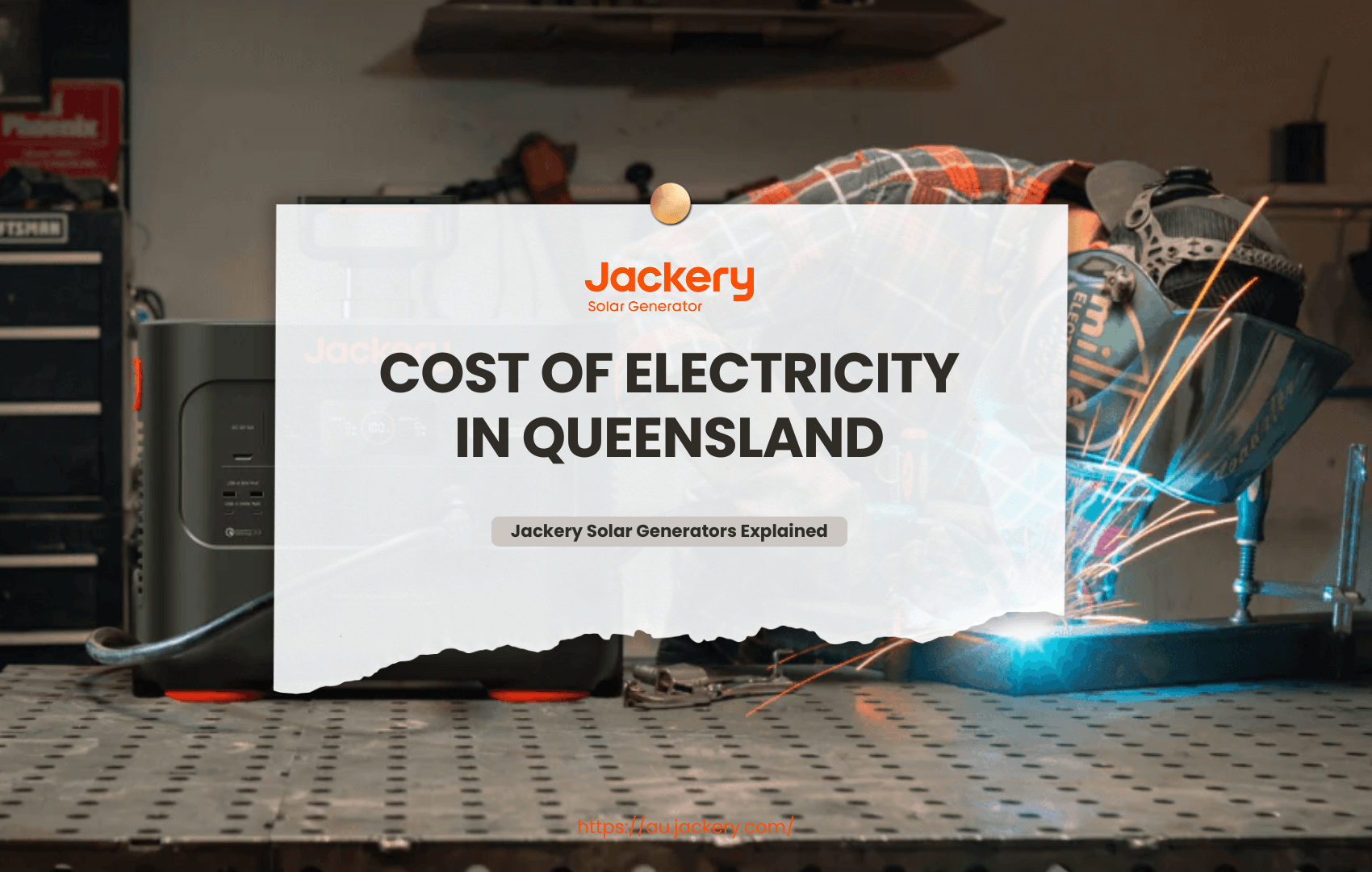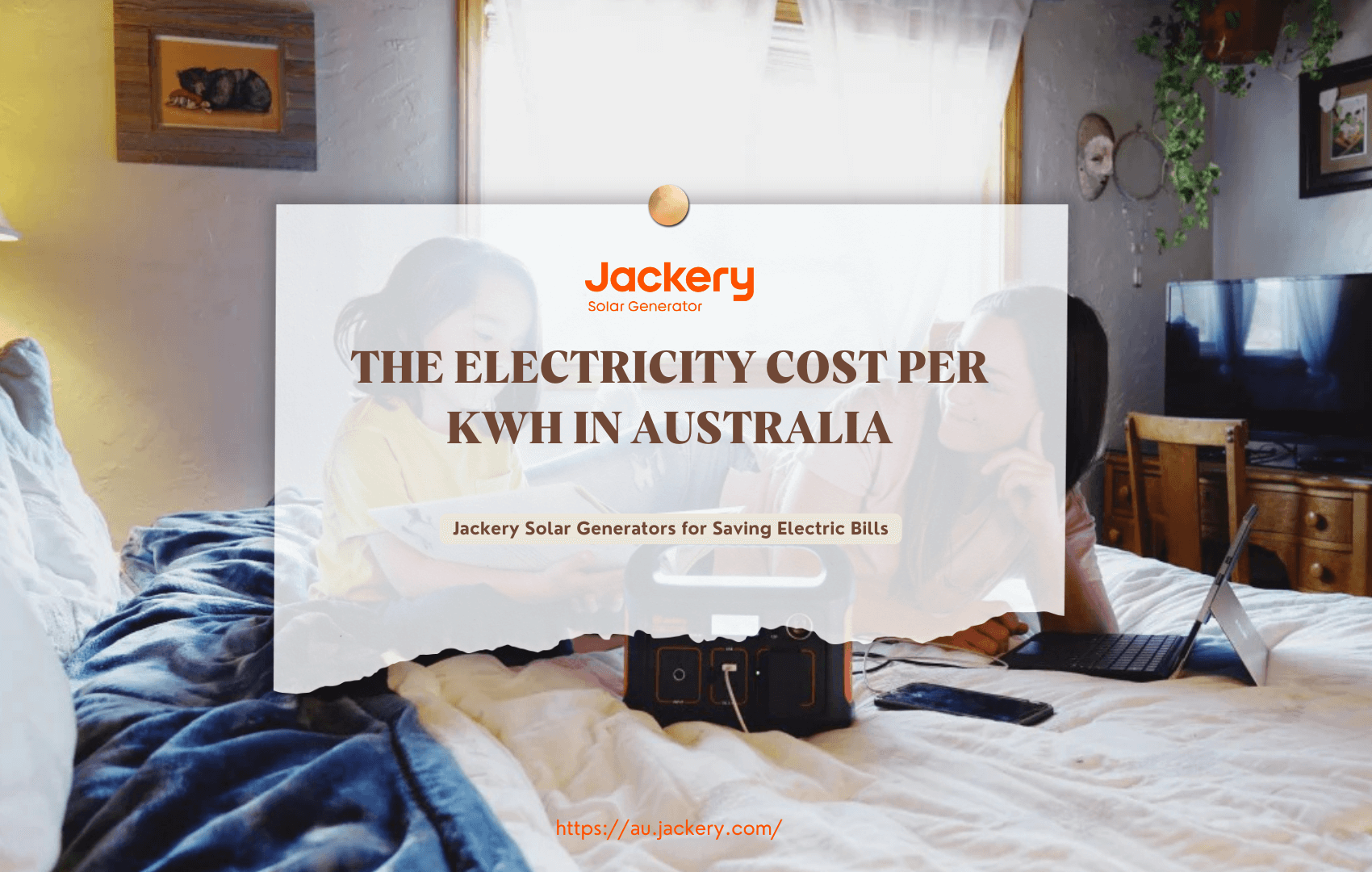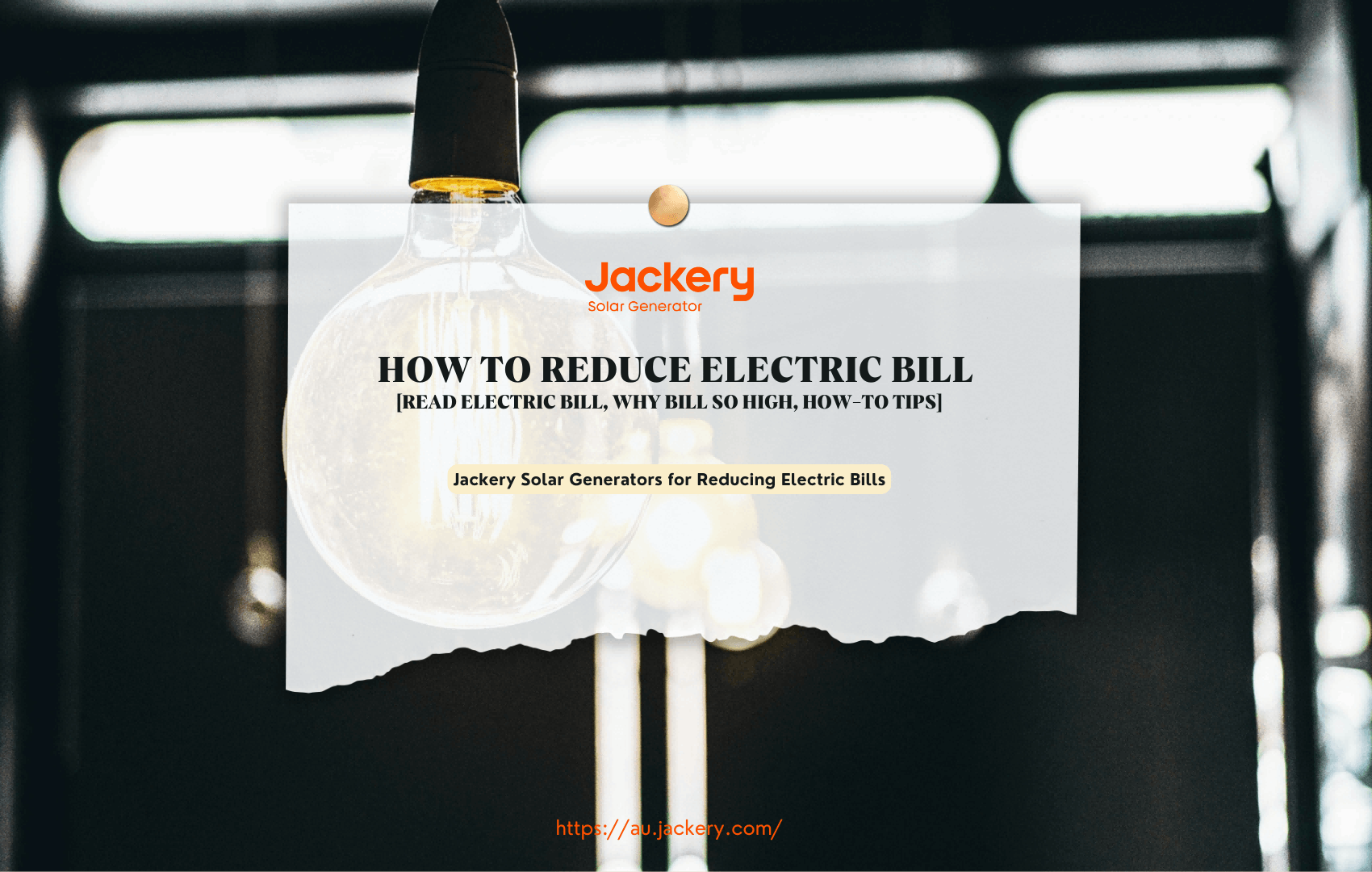|
Key Takeaways: |
|
- The NSW government's solar battery rebate will give residents and businesses an upfront discount and VPP incentive. - Detailed steps involved in applying for the NSW solar battery upfront subsidy and subsequent optional VPP rebate. - Detailed eligibility requirements for obtaining the NSW solar battery rebate. - Batteries that are eligible for the NSW solar battery rebate. - Benefits that the solar battery rebate can bring. - We highly recommend that you prepare a portable power source, like Jackery Explorer 2000 Plus or 1000 Plus, to power your appliances with solar energy without spending your electric bills. |
What Is the Solar Battery Rebate in the NSW?
As an important region for solar energy development in Australia, New South Wales has been committed to promoting the use of renewable energy. Therefore, in recent years, the New South Wales government has launched a solar battery rebate to encourage residents and businesses to adopt solar storage battery systems.
The New South Wales government will launch the New South Wales Solar Battery Rebate under the Peak Demand Reduction Scheme (PDRS) on November 1, 2024. The program aims to help households and businesses with rooftop solar improve energy efficiency and reduce electricity costs by installing battery energy storage systems and connecting to virtual power plants (VPPs).
Here are the key things to know about the solar battery rebate in New South Wales:
Peak Demand Reduction Scheme (PDRS): PDRS is the official name of the New South Wales solar battery rebate. It encourages residents to install more batteries to reduce the power grid's peak demand.
Virtual Power Plant (VPP): Solar battery owners can join a virtual power plant (VPP) program. During peak grid demand hours, the electricity stored in the battery can be released back to the grid to address frequency and voltage imbalances, local outages or disturbances, and maintain network stability. The VPP operator pays to use the electricity stored in the battery.
How Does The Solar Battery Rebate in NSW Work?
First, the upfront discount in the solar battery rebate in New South Wales is not directly for customers; instead, a prepaid discount is given to the certified supplier who installed the battery and then passed on to the customer.
The VPP Prebate works similarly to the Australian government's solar rebate. Connecting batteries through a VPP agreement allows households and businesses to share capacity across the grid.
In short, the solar battery rebate in New South Wales will help households and businesses who want to save on electricity bills reduce battery costs. But before completing the installation, please confirm the exact rebate with your certified installer to ensure the correct amount is applied.
What Is the Amount of the Solar Battery Rebate in New South Wales?
All eligible New South Wales residents can enjoy this solar battery rebate after installing a new solar battery. Under the NSW Battery Scheme, users are estimated to apply for up to 3,200 Australian dollars rebates over three years. Here are two types of solar battery rebates in NSW:
Upfront Installation Rebate: Generally, the upfront installation rebate for solar batteries can range from 1,600 to 2,400 Australian dollars. However, the specific upfront installation rebate depends on the size of the solar battery. For example, the upfront installation rebate for a 10kWh solar battery is around 2,000 Australian dollars. Beyond that, you can consult the solar battery installer to get more accurate data (upfront installation rebate for solar batteries).
VPP Rebate Value: You can also apply for the solar battery rebate. The VPP rebate is another initiative of the NSW PDRS program that aims to reduce grid demand. If you already have a battery, you can get a subsidy by connecting your system to a virtual power plant (VPP). If you connect to a VPP, you can get a 250 to 400 Australian dollars rebate. However, only two VPP rebates can be claimed during the battery's life, with a minimum of three years between claims.
Step-by-Step Guide to Apply the NSW Solar Battery Rebate
In New South Wales, installing a solar battery can benefit the environment and save money through the government rebate. In addition, applying for a home solar battery rebate in New South Wales is relatively simple. Here are the detailed steps for applying for the upfront solar battery subsidy and the optional VPP rebate in New South Wales.

Step 1: Do Your Research in Advance
Please familiarise yourself with which solar battery rebates are available and their eligibility requirements in advance. Generally, you must be a resident or business owner in New South Wales and have a rooftop solar system that complies with relevant standards and regulations. You may be eligible for an upfront installation discount or a VPP rebate for a solar battery rebate. In addition to this, you also need to understand and find the battery size and VPP rebate provider that best suits your needs.
Step 2: Contact an Approved Supplier
In New South Wales, solar battery rebates are obtained through approved suppliers IPART approves. If you don't have a solar battery, order one from a professional supplier. The most popular solar batteries are eligible for solar battery rebates in New South Wales. However, choose a solar battery that meets specific performance criteria, such as warranty and capacity requirements.
Professional solar battery suppliers can help guide this process and ensure compliance with all requirements. For example, you can contact an approved supplier (ACP), such as Skyline Solar, to install batteries under PDRS.
Step 3: Get a Quote
Once you've chosen your solar battery, request a quote (including the cost, installation fees, and any applicable discounts) from your preferred supplier. If you are eligible for an upfront cost rebate for a solar battery in New South Wales, ensure the amount is waived (up to AUD 2,400).
If you are unsure whether the quote you receive is the best price, consider quotes from multiple suppliers. When comparing solar battery quotes, you must consider the total cost, battery specifications, warranty terms, and VPP options.
Step 4: Sign the Agreement
As with any government-provided rebate, you must review and sign the necessary documents after selecting a preferred supplier and VPP provider before applying. First, you must sign a nomination form to allow the selected ACP (qualified installer) to apply for a rebate on your behalf. Second, complete the installation contract with the chosen supplier and submit the documents to apply for a rebate.
Step 5: Select the Installer
After selecting the battery and comparing quotes, you must coordinate with your selected supplier and determine the installer and installation time. PDRS-approved suppliers will undergo additional compliance checks to ensure the installation is as safe as possible.
Step 6: Connect to VPP (Optional)
After the solar battery is installed, you can choose to connect the battery to (VPP) and get more rebates. Usually, the certified supplier will provide you with a VPP contract to sign and deduct the rebate. This step is not required but optional; if you find it troublesome, you can ignore or omit it.
Finally, after completing the above steps, you can apply for the solar battery rebate in NSW and enjoy the benefits of a new solar battery system and reduced energy costs. During the above process, you can always contact the New South Wales Energy Department for help if you have any questions.
What Are the Qualifications for NSW Solar Battery Rebate?
The eligibility requirements for applying for the NSW solar battery rebate are relatively simple, as it does not have income-based restrictions like the Victorian solar rebate. However, specific conditions must be met to be eligible for the NSW solar battery rebate. Here are the detailed eligibility requirements for the NSW solar battery rebate:

Basic Requirements
The first qualification for the NSW solar battery rebate is to be a resident of NSW. However, the rebate is also available to almost any size home or business.
Whether to Install Solar Panels
Generally, both existing and newly installed solar panel systems are eligible for the NSW solar battery rebate. In other words, NSW residents who have installed (or are installing) a solar panel system on their property and connected to the grid (before installing a solar battery) are eligible for the solar battery rebate.
Is It a New Solar Battery
Please note that the installation rebate in the NSW solar battery rebate only applies to new solar battery installations (installed after November 1, 2024). You must install a new solar battery, even if it is not connected to the VPP.
If the property already has a solar battery, a new battery installed at the same address will not be eligible. Therefore, those with solar batteries eager to add others are not eligible to apply for the rebate.
Solar Battery Specifications
If you want to be eligible for the NSW solar battery rebate, the nominal capacity of the eligible solar battery must be at least 2kWh. Of course, the maximum nominal capacity of the eligible solar battery is 28kWh. In addition, solar batteries must be new and on the program's "approved battery list," and existing batteries are not eligible.
Installation of Solar Battery
In NSW, your solar battery must be installed by an approved supplier/certificate provider (ACP) under the PDRS program.
|
PDRS-approved Accredited Certificate Provider (ACP) |
|
|
4Eva Energy ADS Astra Green Solutions Creditex Demand Manager EC Focus Eco Smart Savers Ecovantage Electric Future Sustainability Services Greenbank Environmental |
Habitat Energy Systems MAC Trade Services My Energy Group National Carbon Bank of Australia Powertraders Sunselect Trade In Green Virtual Power Co Your Green Planet |
(Data Source: energy.nsw.gov.au )
Eligibility for VPP Rebate
Connecting your solar battery (new solar battery) to the VPP for the first time can make you eligible for an additional rebate of AUD 250 to AUD 400 in NSW. In addition, the new battery installed must have a 6-year warranty. Please note that VPP customers with solar batteries can enjoy this rebate again after a gap of three years.
However, policies may change, so it is recommended that you regularly check the NSW government's official website for the latest information.
Which Solar Batteries Are Eligible for the NSW Solar Battery Rebate?
In NSW, if you install a solar battery, you will also have the opportunity to receive a solar battery rebate from the government. However, not all solar batteries meet NSW's requirements for a solar battery rebate. Here is a detailed explanation of which solar batteries are eligible for a solar battery rebate in NSW:
The solar battery model you choose must appear on the approved equipment list approved by the NSW Planning Administrator (IPART). The battery on the approved equipment list must meet specific technical and performance criteria, including:
• Storage capacity between 2 and 28kWh (the national average electricity consumption for a family of 5 is 25 kWh daily.)
• 10-year warranty and retain at least 70% of the available capacity after this period.
• Operating temperature (-10 to 50°C).
• Have a battery management system and internet connectivity (including connection to the VPP).
In short, all batteries currently approved by the CEC appear to be eligible for a solar battery rebate (pending confirmation). In addition, the solar battery system you choose (including its components and installation) must comply with all relevant Australian standards and regulations outlined in the PDRS rules.
Here are a few popular solar batteries currently on the NSW market:
|
Battery Model |
Usable Battery Capacity (kWh) |
Eligible under NSW Solar Battery Rebate? |
|
Tesla Powerwall 2 |
13.5 |
Yes |
|
Tesla Powerwall 3 |
13.5 |
Yes |
|
Sungrow SBR096 |
9.6 |
Yes |
|
Alpha ESS Smile 5 |
10.1 |
Yes |
|
BYD Battery-Box Premium LVS 12.0 |
12 |
Not Currently–only 60% Usable capacity guaranteed after 10 years |
|
LG Chem RESU 13 |
12.4 |
Not Currently–only 60% Usable capacity guaranteed after 10 years |
|
Growatt ARK 12.8XH-A1 |
11.52 |
Yes |
|
Huawei LUNA2000-10 |
10 |
Not Currently –only 60% Usable capacity guaranteed after 10 years |
(Data Source: solarchoice.net.au)
However, the approved list of approved equipment and eligibility criteria may change. Therefore, please check the latest information on the NSW government website in advance or consult an approved supplier.

What Are the Benefits of Getting the NSW Solar Battery Rebate?
Solar panel and battery storage installations are becoming increasingly popular in New South Wales, and the government-provided solar battery rebate has only fueled this trend. Below, we examine the benefits of solar battery rebates from three perspectives: homeowners, the environment, and the grid.
Benefits to Homeowners
Here are the benefits of solar battery rebates for NSW homeowners:
Reduce Energy Bills: In NSW, you can significantly reduce your electricity bills by storing energy (solar energy) and using it when electricity prices are high. In addition, the solar battery rebate further reduces the initial installation cost of solar batteries, making them affordable for more households.
Improve Energy Independence: The solar battery rebate has prompted more NSW residents to install storage battery systems. Solar batteries generally offer greater energy independence, give you more control over your energy use, and protect you from grid outages.
High Return on Investment: Solar batteries are a long-term investment, and the solar battery rebate in NSW significantly reduces the upfront cost, shortens the payback period, and makes the investment more financially attractive.
Benefits to the Environment
The following are the benefits of solar battery rebate to the environment:
Reduce Carbon Emissions: The solar battery rebate in New South Wales encourages people to use solar cells and reduce dependence on fossil fuels.
Support Renewable Energy Transition: Large-scale solar battery installations help build a more reliable and stable power grid, manage peak demand, and reduce emissions. Therefore, they encourage more households and businesses to adopt renewable energy.
Benefits to the Power Grid
The following are the benefits of solar battery rebate to the power grid:
Enhance Grid Stability: Solar battery rebates (especially VPP) help balance the power grid's supply and demand and reduce the risk of power outages. Solar batteries can also provide additional power during peak hours, relieve the pressure on the power grid, and improve its stability and reliability.
Promote the Construction of Smart Grids: Solar batteries can be combined with innovative grid technologies to allocate and manage power resources. For example, households can monitor and manage their electricity consumption in real-time through smart meters.
Jackery Portable Power Stations Explained
A portable power station is easier to carry and set up and can often power multiple devices simultaneously. This makes it perfect for outdoor activities, camping, or emergency backup power situations where a fixed installation isn't possible.
A solar battery, on the other hand, is better for long-term energy storage in one place. It's usually connected to a home solar panel system to maximise self-generated electricity.

We recommend Jackery Portable Power Stations for their durability, resistance to harsh temperatures, and safe operation during crises. These portable battery chargers use ChargeShield technology to protect devices from voltage fluctuations. Due to elevated electricity costs for powering household appliances, a solar generator could provide charging using solar energy at no cost.
Jackery Explorer 1000 Plus
The Jackery Explorer 1000 Plus, with a capacity of 1264 Wh and a 2000W output, boasts the highest output among comparable items, accommodating 99% of devices, especially for home power backup and outdoor portable power. This all-in-one generator is adaptable and scalable in capacity, designed to fuel your life. Additionally, you may manage your power station via the Jackery APP.

The following are the features that may help you with Jackery Explorer 1000 Plus:
Expandable Capacity for Charging More Appliances: With the expandable capacity from 1.26 to 5 kWh, it is powerful enough to charge more cooling appliances at home (to save electric bills) or outdoor activities (camping, hiking, etc.).
Fast Solar Charging: The Solar Generator 1000 Plus combines SolarSaga 100W solar panels with Explorer 1000 Plus. It only takes 4.5 hours to recharge the power station fully with four solar panels, and the pass-through charging ability makes it possible to charge the power station and cooling appliances at the same time.
Without Noise & Pollutants: Discover unparalleled serenity with our silent, emission-free technology. Participate in transforming sustainability as we proudly introduce the industry's first entirely eco-friendly packaging. This means you can safely and quietly use this solar generator at home, enhancing your energy solution with Jackery.
|
Appliances |
Working Hours |
|
CPAP Machine (60W) |
16.9-70.8H |
|
Computer (300W) |
3.4-14.2H |
|
Heat Pump (800W) |
1.3-5.3H |
|
Refrigerator (700W) |
1.7-6.1H |
|
TV (150W) |
6.7-28.3H |
(*The working hours are only for reference; the actual working hours depend on your usage.)
Jackery Explorer 2000 Plus
The Jackery Explorer 2000 Plus accommodates additional battery packs, enhancing its capacity from 2 kWh to an impressive 12 kWh. This makes it ideal for charging appliances (not only cooling equipment) indoors and outdoors.

The following are the features that may help you with Jackery Explorer 2000 Plus:
Portable Powerhouse for Indoors & Outdoors: with the expandable capacity and over 3000W power output, the 2000 Plus covers all your power needs in a heatwave. As mentioned above, the most crucial way to cool your home is by using cooling appliances, whether ceiling fans or heat pumps. Also, when you are camping or off-grid living in hotter conditions, it can provide a consistent power supply for your appliances.
Multiple Recharge Methods: Six SolarSaga 200W solar panels can fully recharge the Explorer 2000 Plus in only 2.5 hours. The power source is no longer connected to the power grid and can charge itself using sun energy. You can also recharge it using wall sockets and carports for 1.7 and 25 hours.
AI-Enabled Speed Charging & Protection: The Jackery AI variable-speed charging solution optimises electricity intelligently and offers dual physical protections with 62 mechanisms for excellent safety during energy use. The Explorer 2000 Plus is centred on longevity and safety. Its 10-year lifespan is guaranteed by its LiFePO4 battery chemistry and its cutting-edge ChargeShield Technology to protect your devices and prolong battery life.
|
Appliances |
Working Hours |
|
CPAP Machine (60W) |
27.2-170H |
|
Computer (300W) |
5.4-34H |
|
Heat Pump (800W) |
2-12.75H |
|
Refrigerator (700W) |
2.3-14.6H |
|
TV (150W) |
10.9-68H |
(*The working hours are only for reference; the actual working hours depend on your usage.)
FAQs about Solar Battery Rebate NSW
The following are the frequently asked questions about the solar battery rebate in NSW:
1. How much is the rebate for solar batteries in NSW?
Currently, the NSW government's solar battery rebate offers eligible homeowners and businesses a $1,600 to $2,400 on upfront installation costs. In addition, there is the opportunity to receive a VPP rebate of $250 to $400. (The VPP rebate can be applied twice within six years, with a minimum of three years between the two.)
2. How much does adding a battery to existing solar costs?
Here are the prices of popular battery models in central Sydney (for reference only)
|
Battery |
Capacity (kWh) |
Original Price |
Price with NSW Battery Rebate |
|
Tesla Powerwall 3 |
13.5 kWh |
$16,000 |
$13,600 |
|
Tesla Powerwall 2 |
13.5 kWh |
$14,500 |
$12,100 |
|
BYD |
13.8 kWh |
$14,000 |
$11,600 |
|
Enphase |
10 kWh |
$15,000 |
$12,600 |
|
SunGrow |
12.8 kWh |
$12,000 |
$9,600 |
|
Alpha ESS |
10.1 kWh |
$10,500 |
$8,100 |
|
Sonnen |
10 kWh |
$14,000 |
$11,600 |
(Data Source: solarcalculator.com.au)
The table also provides the cost after applying the NSW government's solar battery rebate (upfront rebate).
3. What batteries are approved for the NSW battery scheme?
Suppose a battery appears on the Clean Energy Council's approved battery list and meets the additional eligibility and equipment requirements set out in the Peak Demand Reduction Scheme (PDRS). In that case, it is eligible for a solar battery rebate.
4. How does a solar battery rebate work in NSW?
In NSW, a solar battery rebate is not paid directly to the customer. Instead, it is typically an upfront discount an approved supplier offers at installation time. Solar battery suppliers may offer various pricing models, so getting quotes from multiple suppliers is essential.
Final Thoughts
In short, the New South Wales solar battery rebate helps install more home batteries in New South Wales to build a more reliable and stable power grid and reduce dependence on fossil fuels during peak demand. It also supports the transition to renewable energy and provides financial relief to residents, especially those facing financial pressure, by helping them cope with rising energy prices.

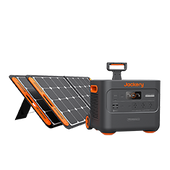
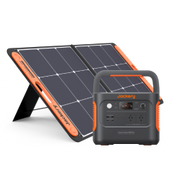
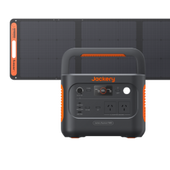
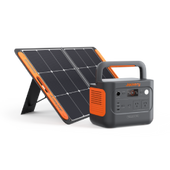
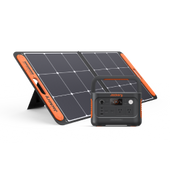

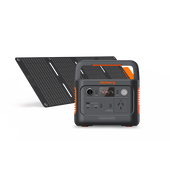
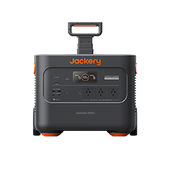
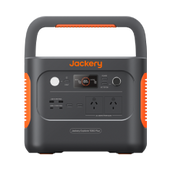
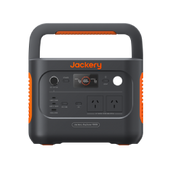
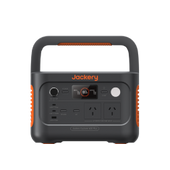
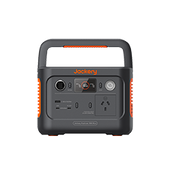
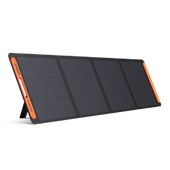
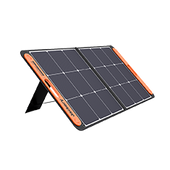
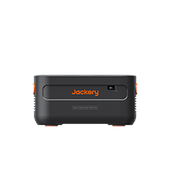
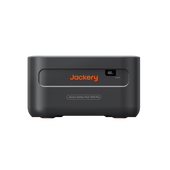
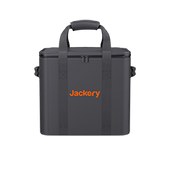
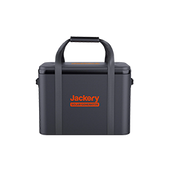
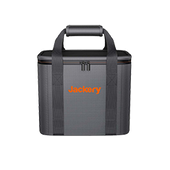

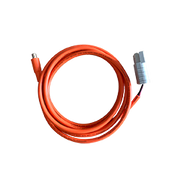

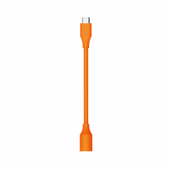
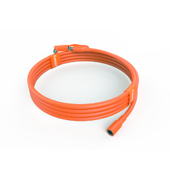




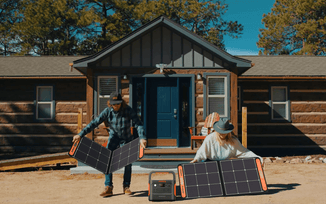
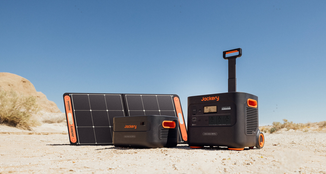
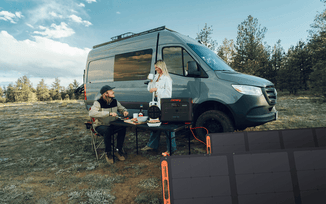
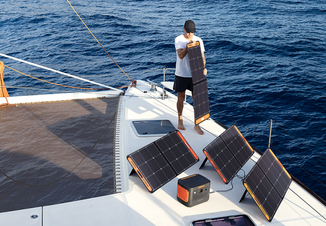

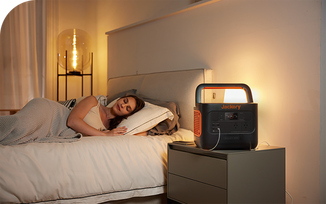
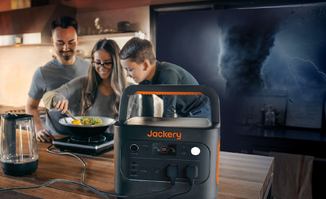

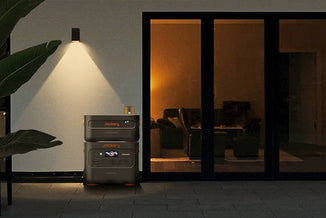



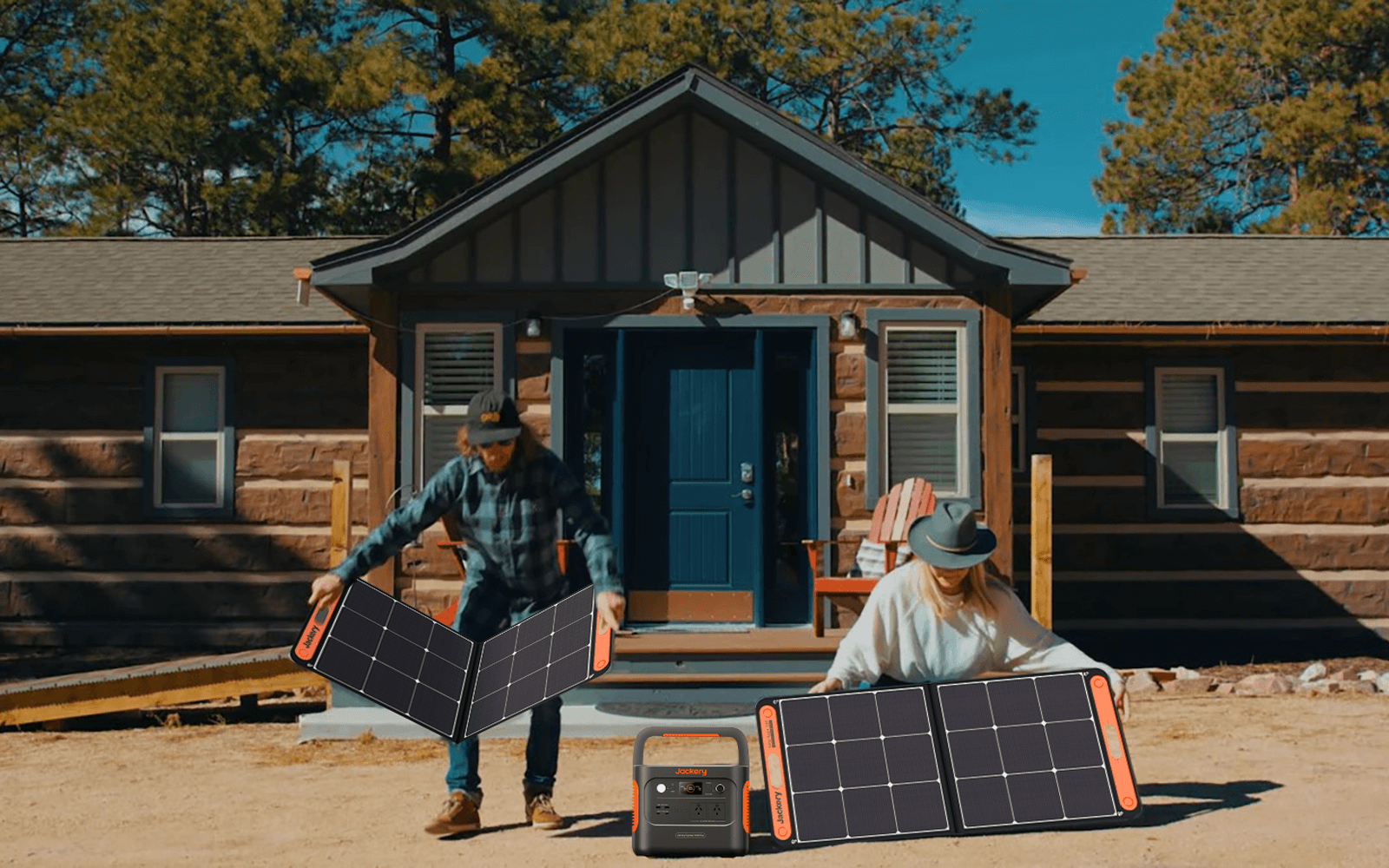
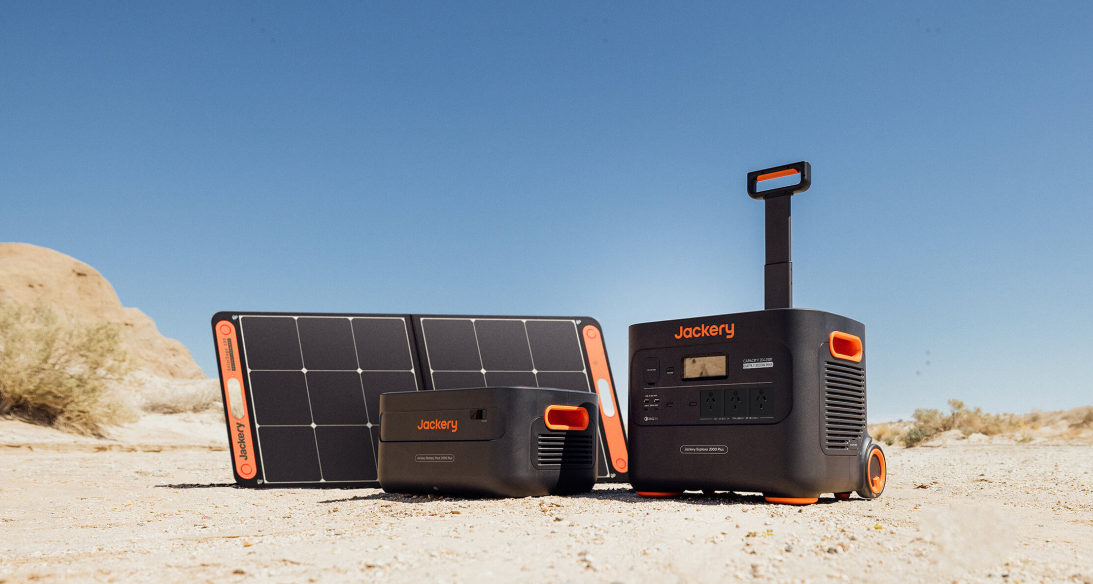
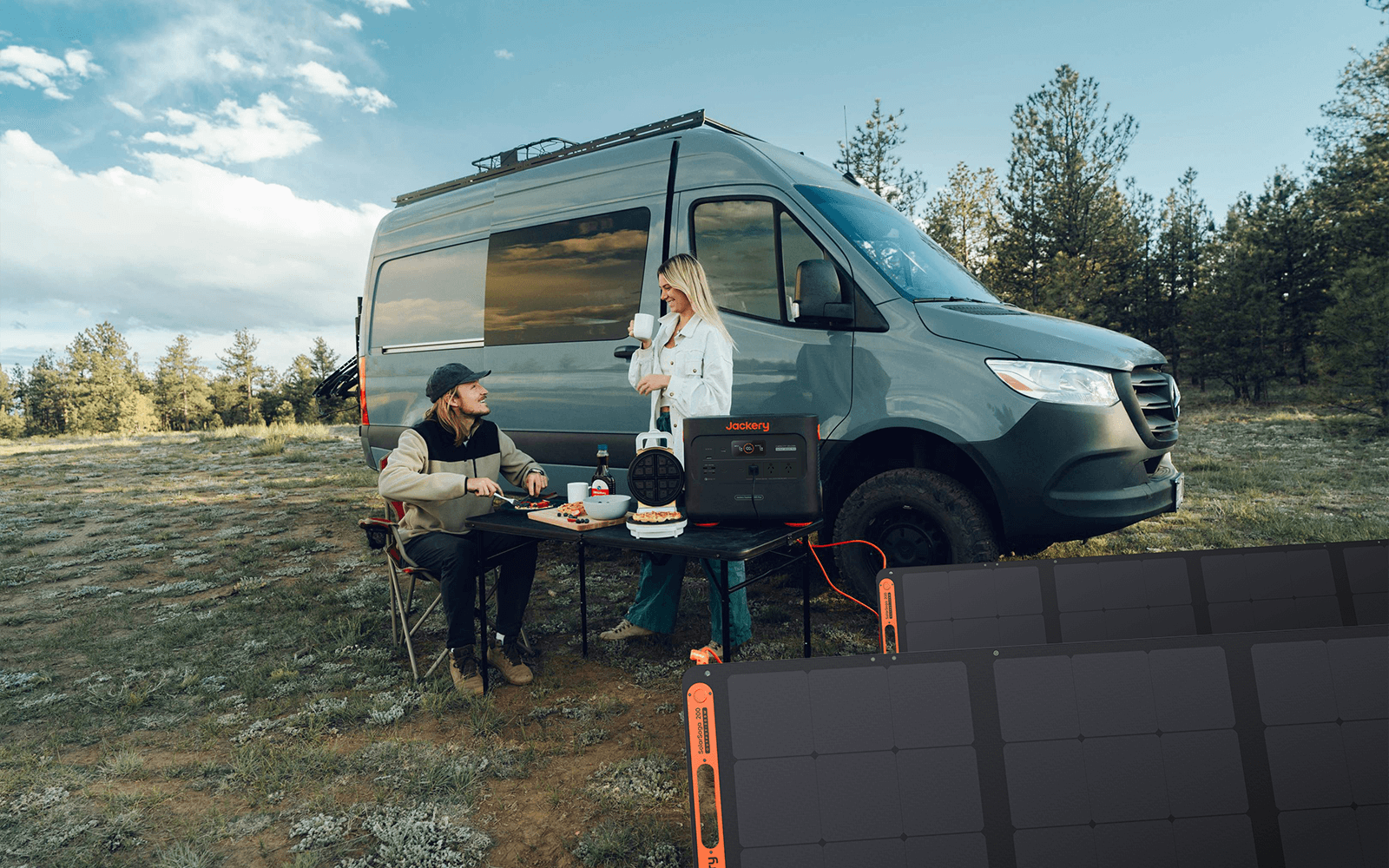
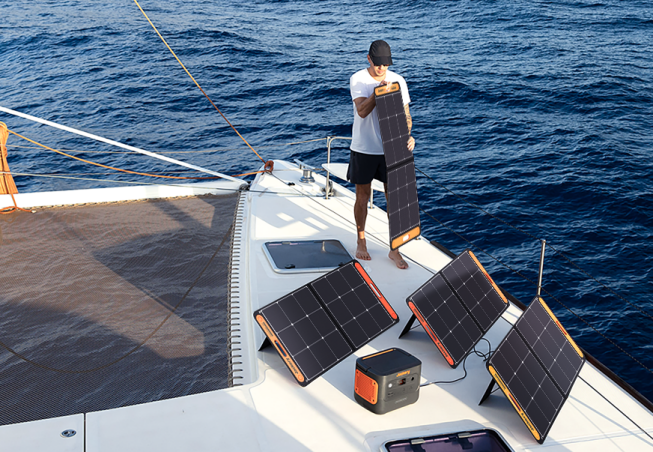

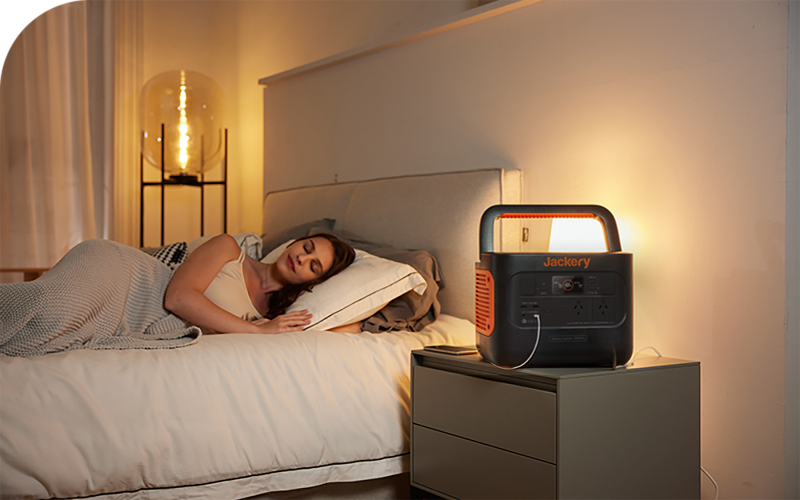
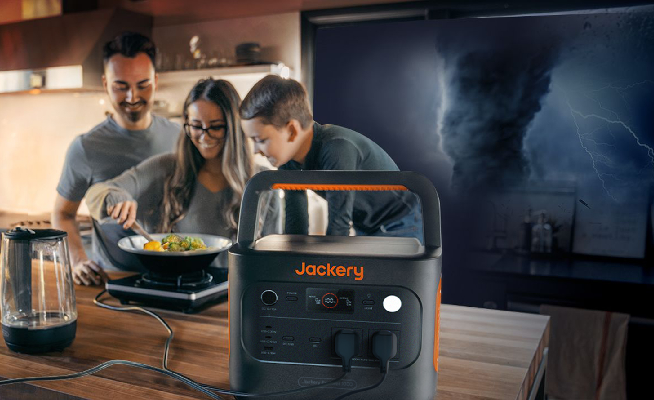

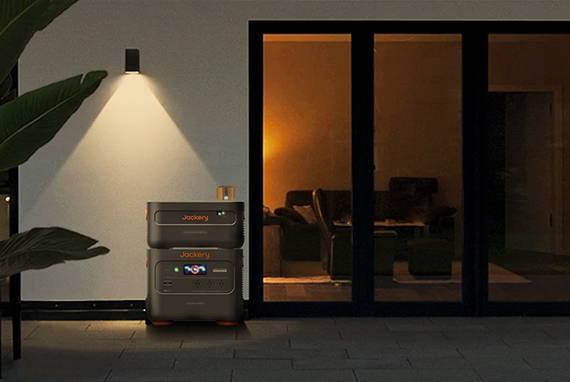

![Guide to Solar Battery Rebate in NSW [2025 Update]](http://au.jackery.com/cdn/shop/articles/solar_battery_rebate_nsw_guide.png?v=1740639005)




